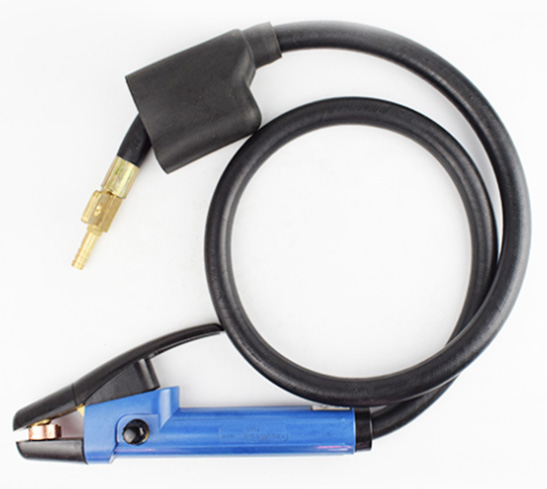How to adjust the arc characteristics (such as current, voltage, polarity) of carbon arc gouging? What are the differences in the application scenarios of DC and AC power supplies?
The arc characteristics adjustment method of carbon arc gouging is as follows:
Current adjustment
• The current size is mainly selected according to the carbon rod diameter, workpiece thickness and material. Generally speaking, the larger the carbon rod diameter, the thicker the workpiece or the higher the melting point of the material, the larger the current required. For example, for a carbon rod with a diameter of 6mm, when gouging carbon steel, the current can be selected at around 300-400A; when gouging stainless steel, due to the high melting point of stainless steel, the current may need to be adjusted to 350-450A. In actual operation, you can first select a rough current value based on experience, and then observe the gouging effect, such as gouging speed, gouging groove shape and quality, and then make appropriate adjustments. If the gouging speed is too slow and the bottom of the gouging groove is uneven, the current may need to be increased; if the carbon rod burns too quickly and the metal on both sides of the gouging groove is overheated and melted too much, the current should be reduced.
Voltage adjustment
• The voltage of carbon arc gouging is usually kept within a certain range, generally 30-40V. The voltage adjustment is relatively small, mainly to maintain a stable arc. When the arc length changes, the voltage will fluctuate accordingly. For example, when the distance between the carbon rod and the workpiece increases, the arc becomes longer, and the voltage will increase slightly; conversely, the voltage will decrease. In actual operation, the arc length should be kept relatively stable to ensure the stability of the voltage. If the voltage is too high, the arc will become longer and unstable, and it is easy to cause arc breaking; if the voltage is too low, the arc energy is insufficient, which will lead to low planing efficiency and even failure to plan normally.
Polarity adjustment
• Carbon arc gouging generally adopts DC reverse connection, that is, the workpiece is connected to the negative pole and the carbon rod is connected to the positive pole. The reason for using DC reverse connection is that under this polarity, the arc is stable and the heat is concentrated on the workpiece, which is conducive to improving the planing efficiency and quality. At the same time, the carbon rod burns relatively less when reversed, which can extend the service life of the carbon rod. If DC positive connection is used (the workpiece is connected to the positive pole and the carbon rod is connected to the negative pole), the arc is unstable, the carbon rod burns seriously, the planing efficiency is low, and it is easy to produce defects such as carbon inclusion, so it is generally not used. However, in some special cases, such as gouging thin plates, in order to reduce heat input and prevent excessive deformation of the plate, you can also try to use DC positive connection, but the process parameters need to be strictly controlled.
The applicable scenarios of DC and AC power supplies in carbon arc gouging are different:
• DC power supply
The arc stability is good, and it can provide stable arc energy, making the gouging process more stable. The gouging groove shape is regular and the dimensional accuracy is high. It is suitable for occasions with high requirements for gouging quality, such as pressure vessels, shipbuilding and other industries. Repair and groove opening operations.
When DC is reversely connected, the heat is concentrated on the workpiece, which is conducive to rapid melting of metal and improving gouging efficiency. It is suitable for gouging thick plates and high melting point metals.
The arc characteristics can be accurately controlled by adjusting the current and voltage to meet the requirements of different materials and processes.
• AC power supply
The arc stability of AC power supply is relatively poor. The arc will produce a certain swing with the periodic change of current, resulting in the accuracy of the gouging groove shape and size is not as good as that of DC power supply. Therefore, it is generally not used in occasions with high requirements for gouging quality.
Since the current direction of the AC power supply is constantly changing, the carbon rod and the workpiece have a positive and negative alternating process in each cycle, which makes the carbon rod burn relatively evenly, but the overall burn amount may be greater than when the DC is reversed. However, AC power supply equipment is relatively simple and low in cost. In some occasions where the planing quality requirements are not high, the workpiece thickness is thin, and the cost is more sensitive, such as the processing and maintenance of ordinary steel structures, AC power supply can be considered for carbon arc gouging.

Contact: admin
Phone: +86-13665233012
E-mail: service@weldmaterial.com
Add: Huanghua Industrial park, Jiangdu City, Yangzhou , Jiangsu Provicne, China.